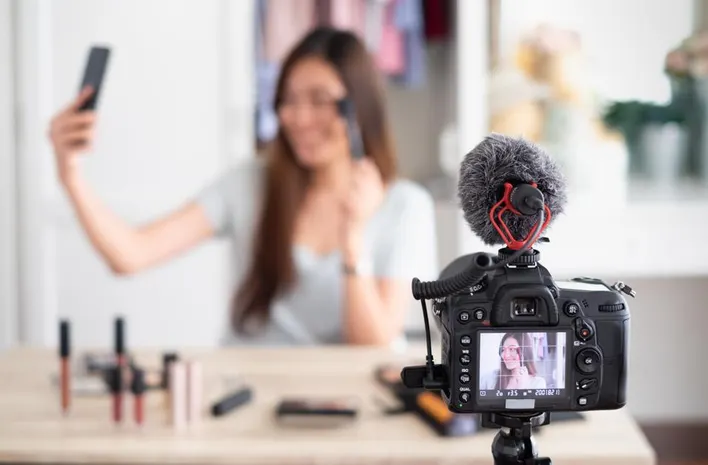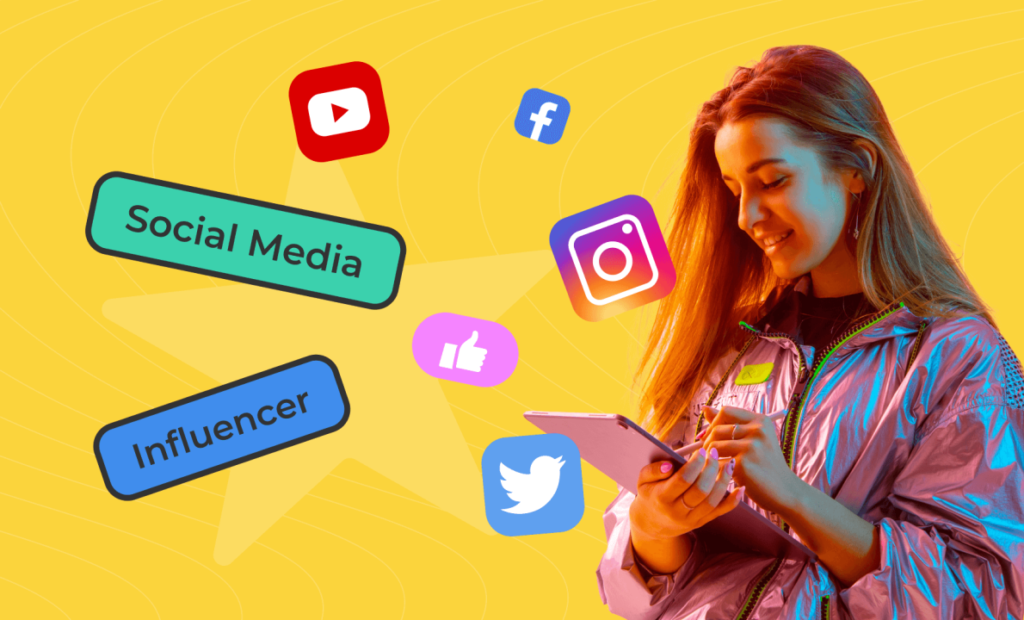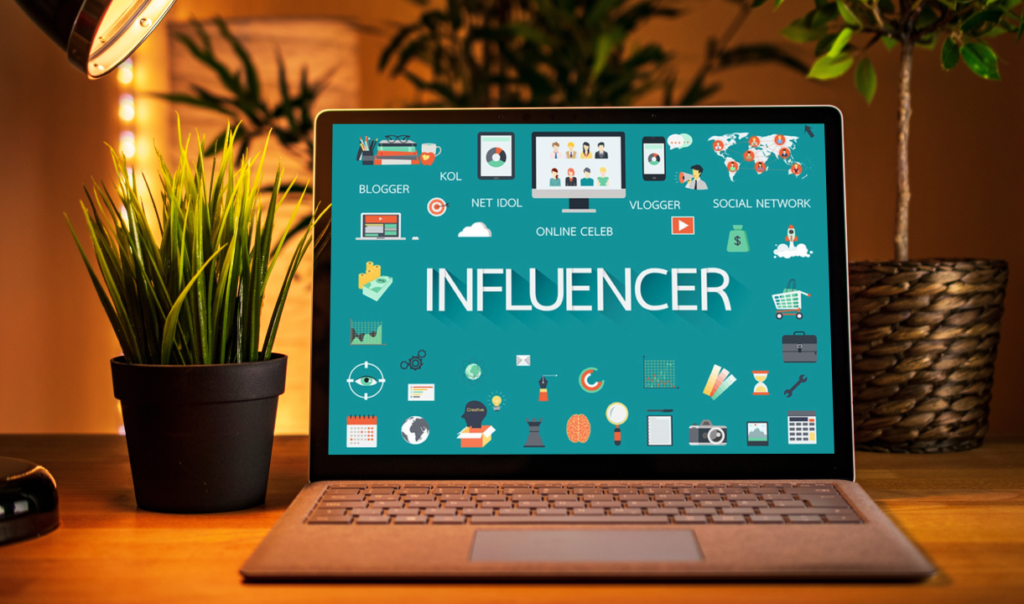In recent years, influencer marketing has emerged as a dominant force in the digital marketing landscape. Once a niche strategy, it has transformed into a mainstream method for brands to connect with audiences in a meaningful and impactful way. The rise of social media and the growing influence of online personalities have played a significant role in this evolution. This article explores the journey of influencer marketing from its early days to its current status as an essential component of modern marketing strategies. We will examine the origins, growth, challenges, and future trends of influencer marketing, shedding light on its profound impact on both brands and consumers.

The Early Days of Influencer Marketing
Traditional Celebrity Endorsements
The concept of using influential figures to promote products is not new. Traditionally, brands have relied on celebrities to endorse their products. High-profile endorsements have been a staple in marketing for decades, with figures like Michael Jordan endorsing Nike or Marilyn Monroe promoting various products. These endorsements leveraged the star power of celebrities to reach large audiences and build brand credibility.
The Advent of Online Influencers
The early 2000s saw the emergence of online influencers as a new breed of promoters. With the rise of blogs and social networking sites, individuals with significant online followings began to shape opinions and influence consumer behavior. This marked the beginning of influencer marketing in its modern form, where influence was no longer restricted to traditional celebrities but extended to everyday people with niche audiences.
Example: Early Blog Influencers
Blogs played a pivotal role in the initial stages of influencer marketing. Bloggers like Perez Hilton and The Pioneer Woman (Ree Drummond) gained substantial followings by sharing their personal experiences and opinions. Brands began to recognize the value of collaborating with these influencers to reach specific target audiences in a more authentic manner.
The Rise of Social Media Influencers

The Social Media Boom
The real transformation in influencer marketing occurred with the rise of social media platforms such as Facebook, Twitter, Instagram, and YouTube. These platforms provided a new avenue for influencers to reach and engage with their audiences. Social media allowed for real-time interactions, visual storytelling, and a more direct connection between influencers and their followers.
Instagram: A Game-Changer
Instagram, launched in 2010, revolutionized influencer marketing with its focus on visual content. Influencers on Instagram began to amass large followings by sharing visually appealing photos and lifestyle content. The platform’s features, such as Stories, IGTV, and shopping tags, further enhanced its effectiveness as a marketing tool.
Example: Influencers on Instagram
Influencers like Kylie Jenner and Aimee Song became prominent figures on Instagram. Jenner’s ability to leverage her massive following to promote her beauty brand, Kylie Cosmetics, highlighted the potential of influencer marketing. Song’s fashion and lifestyle content attracted collaborations with top fashion brands, showcasing the impact of Instagram influencers.
YouTube: The Rise of Video Content
YouTube, which gained popularity in the mid-2000s, allowed influencers to create long-form video content. YouTube influencers, or “YouTubers,” gained credibility and influence by sharing in-depth reviews, tutorials, and personal vlogs. The platform’s algorithm and monetization options provided opportunities for influencers to turn their passion into profitable ventures.
Example: YouTube Influencers
James Charles, a beauty YouTuber, became a notable figure through his makeup tutorials and product reviews. His collaborations with beauty brands and the launch of his own makeup line, Sisters Apparel, demonstrated the power of YouTube influencers in driving brand awareness and consumer engagement.
The Evolution of Influencer Marketing Strategies

The Shift to Micro-Influencers
As influencer marketing matured, brands began to recognize the value of micro-influencers—individuals with smaller but highly engaged followings. Unlike macro-influencers with large audiences, micro-influencers often have more intimate connections with their followers, leading to higher levels of trust and engagement.
Micro-Influencers and Authenticity
Micro-influencers are seen as more authentic and relatable compared to celebrities or larger influencers. Their smaller following often allows for more genuine interactions with their audience, making their endorsements appear more credible. Brands have increasingly turned to micro-influencers to achieve targeted and effective marketing campaigns.
Example: Micro-Influencer Campaigns
The skincare brand Glossier effectively utilized micro-influencers to build its brand image. By partnering with beauty bloggers and enthusiasts, Glossier created a community-driven marketing approach that resonated with consumers and fostered brand loyalty.
The Emergence of Influencer Networks and Agencies
With the growth of influencer marketing, specialized agencies and networks emerged to streamline the process of identifying and collaborating with influencers. These agencies offer services such as influencer vetting, campaign management, and performance analytics.
Example: Influencer Agencies
Agencies like Mediakix and Influencity provide brands with tools and insights to navigate the influencer marketing landscape. These agencies help brands connect with suitable influencers, negotiate partnerships, and measure the effectiveness of their campaigns.
The Impact of Influencer Marketing on Consumer Behavior

Shifting Trust and Preferences
Influencer marketing has significantly altered consumer trust and preferences. Consumers are increasingly turning to influencers for recommendations and opinions, valuing their authenticity and relatability. Influencers often share personal experiences, making their endorsements more persuasive compared to traditional advertising.
Example: Influencer Recommendations
A Nielsen study found that 92% of consumers trust recommendations from individuals over brands. This trust is a key driver of influencer marketing success, as consumers are more likely to act on recommendations from influencers they follow.
The Growth of User-Generated Content
Influencer marketing has also contributed to the rise of user-generated content (UGC). Influencers often encourage their followers to create and share content related to the brands they promote. This UGC extends the reach of marketing campaigns and fosters a sense of community among consumers.
Example: UGC Campaigns
The #MyCalvins campaign by Calvin Klein is a prime example of leveraging UGC. The campaign encouraged influencers and their followers to share photos wearing Calvin Klein products, resulting in a significant increase in brand visibility and consumer engagement.
Challenges and Criticisms of Influencer Marketing
Authenticity and Transparency Concerns
One of the main criticisms of influencer marketing is the issue of authenticity and transparency. Some influencers have been accused of promoting products without proper disclosure of paid partnerships, leading to concerns about misleading advertising.
Example: Disclosure Controversies
In 2017, the Federal Trade Commission (FTC) issued guidelines requiring influencers to disclose paid partnerships and sponsored content. Despite these regulations, some influencers have faced backlash for failing to adhere to disclosure rules, prompting calls for greater transparency in the industry.
The Issue of Market Saturation
The rapid growth of influencer marketing has led to market saturation, with an increasing number of influencers vying for brand partnerships. This saturation can dilute the effectiveness of influencer campaigns and make it challenging for brands to stand out.
Example: Influencer Overload
Brands like Fashion Nova have faced criticism for partnering with numerous influencers in an attempt to reach a broader audience. While this strategy can increase visibility, it may also lead to reduced impact and authenticity.
The Future of Influencer Marketing

Integration with Emerging Technologies
The future of influencer marketing will likely involve greater integration with emerging technologies such as artificial intelligence (AI) and augmented reality (AR). AI can enhance influencer discovery and campaign optimization, while AR can create immersive and interactive marketing experiences.
Example: AI and AR Innovations
AI-powered tools like HypeAuditor and Traackr offer advanced analytics and influencer insights, helping brands make data-driven decisions. AR features on platforms like Instagram and Snapchat enable influencers to create interactive content, such as virtual product try-ons, enhancing the consumer experience.
Long-Term Influencer Relationships
As influencer marketing evolves, brands are likely to focus more on building long-term relationships with influencers rather than one-off collaborations. These ongoing partnerships can foster deeper connections with audiences and drive sustained brand loyalty.
Example: Long-Term Partnerships
Brands like Adidas and Nike have successfully established long-term partnerships with athletes and influencers, resulting in consistent and authentic brand endorsements. These partnerships enable brands to develop cohesive marketing strategies and maintain a strong market presence.
Conclusion
Influencer marketing has come a long way from its early days as a novel approach to promotion. Its evolution from traditional celebrity endorsements to a mainstream marketing strategy reflects its growing significance in the digital age. The rise of social media, the shift to micro-influencers, and the impact on consumer behavior have all contributed to the success and prominence of influencer marketing.

As the industry continues to evolve, it will be essential for brands to stay ahead of trends, address ethical concerns, and embrace technological innovations. By understanding the journey of influencer marketing and adapting to the changing landscape, brands can leverage its power to connect with audiences in meaningful and effective ways.
The future of influencer marketing holds exciting possibilities, from advanced technology integrations to deeper influencer relationships. By navigating these developments thoughtfully and strategically, brands can continue to harness the potential of influencer marketing to drive engagement, build trust, and achieve their marketing objectives in an ever-competitive digital environment.
For more such content, please visit QAWire


